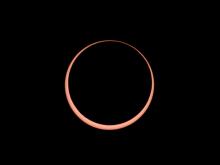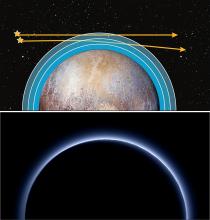Listen to today's episode of StarDate on the web the same day it airs in high-quality streaming audio without any extra ads or announcements. Choose a $8 one-month pass, or listen every day for a year for just $30.
You are here
Moon and Regulus
It’s usually best to stay clear of lions. But the Moon will ignore that bit of wisdom tonight. It will pass quite close to Regulus, the star that marks the heart of Leo, the celestial lion. And for skywatchers from Alaska to western Europe, the Moon will pass in front of the star for a while.
The passage is known as an occultation. It’s a type of eclipse, like last year’s eclipse of the Sun. The Moon will cover the star, blocking it from view.
Over the years, astronomers have used occultations to hunt for close companions around stars. If a star is single, its light will wink off in an instant. If the star has a companion, though, the light from the system will fade in steps, as first one star moves behind the Moon, then the other.
The technique doesn’t always work, though, and Regulus is an example. The bright star we see as Regulus has a small companion. It’s so faint, and so close to the bright star, that there’s no two-step drop when the system passes behind the Moon — the light blinks off all at once. Instead, astronomers discovered the companion through its gravitational tug — it causes a slight shift in the light produced by brilliant Regulus.
And Regulus will stay close to the Moon after they climb into view around 9 or 10 p.m. For most of the country, they’ll pass within a couple of degrees of each other — the width of a finger at arm’s length. The occultation will be visible from Alaska, as the Moon gets close to the lion.
Script by Damond Benningfield





